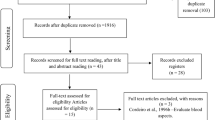Summary
Biological indicators of lead effects on the central nervous system (CNS), hematogenous bone marrow, and kidney function as measured by performance tests, hemoglobin (Hgb) and BUN levels respectively were combined in an integrative index (INDEX). Such an index was calculated by removing age effects in measures of performance and kidney function and then transforming all the variables to Z (standard) units. The relationships between INDEX and biological indicators of lead exposure and absorption (Pb-B and ZPP) were studied in four groups: 191 non-lead exposed males (control group), 169 copper smelter workers, 133 autobody shop workers and 87 secondary lead smelter workers. We found that: 1) the magnitude of the correlation coefficient between INDEX and ZPP was much higher than were the correlations between the various single indicators of lead effects (performance test scores, Hgb, and BUN); and 2) the magnitude of the correlation coefficients was related to the degree of lead exposure and absorption (as reflected in distribution patterns of Pb-B and ZPP)) in each group. The concept of an integrative index of biological effects of lead is important for the evaluation of early manifestations of lead toxicity and also for the correct assessment of adverse health effects of lesser intensity than those characteristic for the classic picture of overt lead poisoning.
Similar content being viewed by others
References
Acton FS (1959) Analysis of straight-line data. Dover, New York
Anastasi A (1976) Psychological testing, 4th edn. Mac Millan, New York
Blumberg WE, Eisinger J, Lamola AA, Zuckerman DM (1977) The hematofluorometer. J Lab Clin Med 89:721–723
Fischbein A, Eisinger J, Blumberg WE (1976) Zinc protorphyrin determination. A rapid screening test for the detection of lead poisoning. Mt Sinai J Med (NY) 43:294–299
Grandjean P, Arriving E, Beckman J (1978) Psychological dysfunctions in lead-exposed workers: relations to biological parameters of exposure. Scand J Work Environ Health 4:295–303
Hänninen H, Hernberg S, Mantere P, Vesanto R, Jalkanen M (1978) Psychological performance of subjects with low exposure to lead. J Occup Med 20:683–689
Lilis R, Blumberg WE, Eisinger J, Fischbein A, Diamond S, Anderson HA, Selikoff IJ (1977a) Lead effects among secondary lead smelter with lead levels below 80 micrograms/ 100 ml. Arch Environ Health 32:256–266
Lilis R, Eisinger J, Blumberg W, Fischbein A, Selikoff IJ (1978) Hemoglobin, serum iron, and zinc protoporphyrin in lead-exposed workers. Environ Health Perspect 25:97–102
Lilis R, Fischbein A, Valciukas JA, Blumberg WE, Selikoff IJ (1980) Kidney function and lead: relationships in several occupational groups with different levels of exposure. Am J Ind Med 1:405–412
Lilis R, Fischbein A, Eisinger J, Blumberg WE, Diamond S, Anderson HA, Rom W, Rice C, Sarkosi L, Kon S, Selikoff IJ (1977b) Prevalence of lead disease among secondary lead smelter workers and biological indicators of exposure. Environ Res 14:255–285
Lilis R, Valciukas JA, Fischbein A, Andrews G, Selikoff IJ (1979) Renal function impairment in secondary lead smelter workers: correlations with zinc protoporphyrin and blood lead levels. J Environ Pathol Toxicol 2:1447–1474
Lilis R, Valciukas JA, Singer RM, Glickman L, Kon S, Sarkozi L, Campbell C, Selikoff IJ (1981) Assessment of lead health hazards in an autobody shop of an automobile assembly plant. Environmental Sciences Laboratory, Mount Sinai School of Medicine of The City University of New York. Report to the National Institute of Health Sciences, June 1
Lilis R, Valciukas JA, Weber J-P, Nicholson WJ, Selikoff IJ (1981) Distribution of blood lead, blood cadmium, urinary cadmium and urinary arsenic in employees of a copper smelter. XX. Int Congress on Occupational Medicine, Cairo, Egypt, Sept 26–29
Lilis R, Valciukas JA, Kon S, Sarkosi L, Campbell C, Selikoff IJ (1982) Assessment of lead health hazards in an autobody assembly plant. J Ind Med 3:33–51
Matarazzo JD (1972) Wechsler's measurement and appraisal of adult intelligence, 5th edn. University Press, New York Oxford
Selikoff IJ, Anderson HA (1979) A survey of the general population of Michigan for health effects of polygrominated biphenyl exposure. Report to the Michigan Department of Public Health. Environmental Sciences Laboratory, Mount Sinai School of Medicine, Sept 30
Valciukas JA, Lilis R (1980) Psychometric techniques in environmental research. Env Res 21:275–297
Valciukas JA, Lilis R, Eisinger J, Blumberg WE, Selikoff IJ (1978) Behavioral indicators of lead neurotoxicity. Results of a clinical field survey. Int Arch Occup Environ Health 41:217–236
Valciukas JA, Lilis R, Petrocci M (1981) An integrative index of biological effects of lead. Am J Ind Med 2:261–272
Valciukas JA, Lilis R, Singer RM, Fischbein A, Anderson HA, Glickman A (1980) Lead exposure and behavioral change: comparisons of four occupational groups with different levels of lead absorption. Am J Ind Med 1:421–426
Valciukas JA, Singer RM (1982) An embedded figures test in environmental and occupational neurotoxicology. Environ Res 28:183–198
Wechsler D (1955) Manual for the Wechsler adult intelligence scale. The Psychological Corporation, New York
Author information
Authors and Affiliations
Additional information
This study was supported in part by NIEHS grant ES00928 of the National Institute of Health, US Department of Human Services
Rights and permissions
About this article
Cite this article
Valciukas, J.A., Lilis, R. A composite index of lead effects. Int. Arch Occup Environ Heath 51, 1–14 (1982). https://doi.org/10.1007/BF00378405
Received:
Accepted:
Issue Date:
DOI: https://doi.org/10.1007/BF00378405




